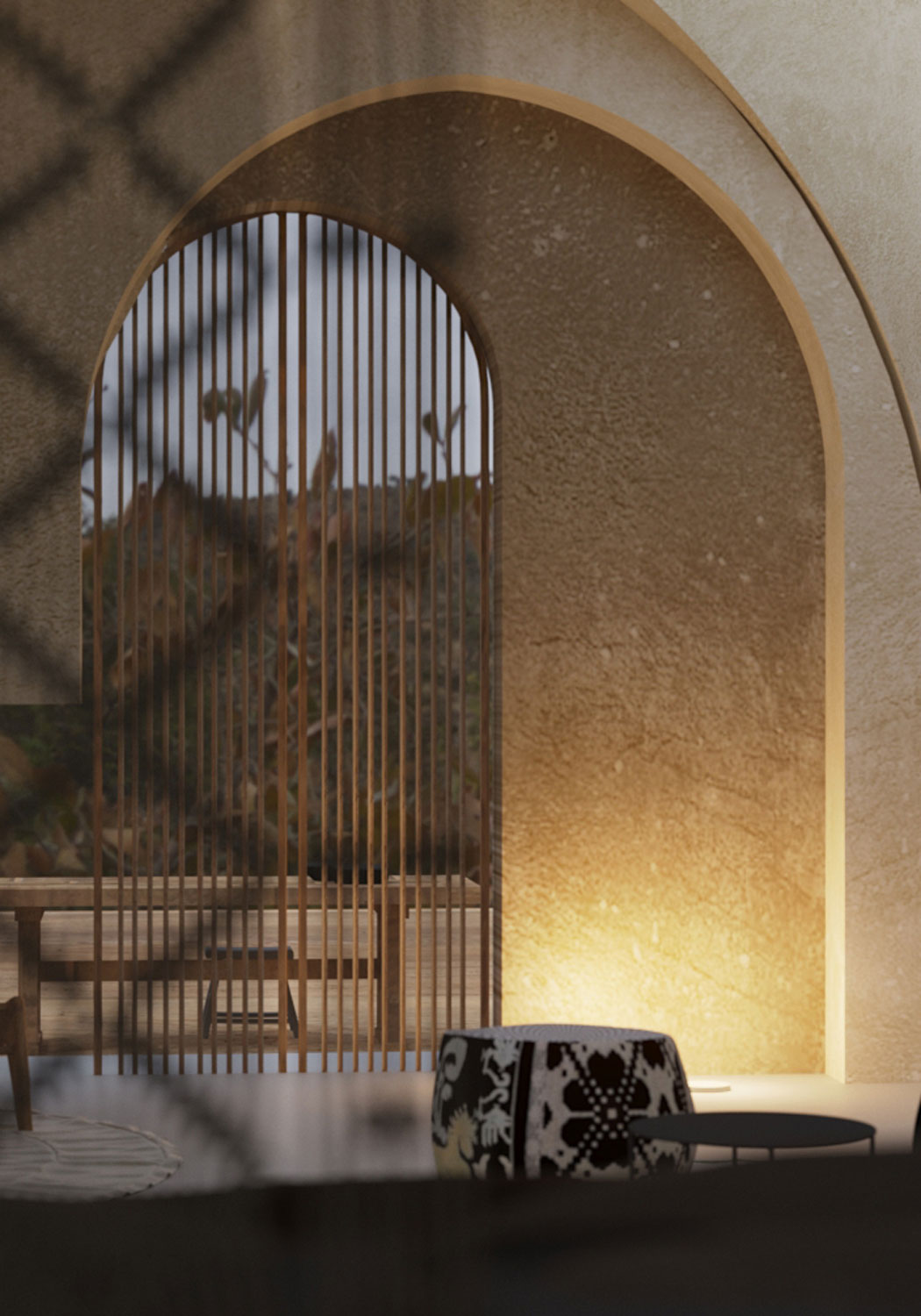Global Architectural Development Reveals Plans for Hotel in Ancient Cappadocia in Turkey
Istanbul and New York-based architecture practice, GAD led by Gokhan Avcioglu revealed plans for a hotel in ancient Cappadocia in Turkey. GAD‘s original designs for a hotel project in Cappadocia have been featured in a set of new designs created by GAD’s visualization team.
Interior design by GAD for the project in Turkey’s Cappadocia created a synthesis of contemporary design and the ancient Christian and cave dwellings of the region. Traditional but stylish interiors of stone architecture emphasizing space and light highlighted the new vision GAD is bringing to tourism in Cappadocia and Turkey.
Learn more about parametric and computational design from pioneers at the CD NEXT conference series:
Cappadocia in central Turkey is an important historical center dating back to ancient times. The geography and geology of the landscape have been instrumental in the types of settlements found there. The soft stone weathered over thousands of years has created an iconic shape that has been identified with Cappadocia and the civilizations that took shape in the center of Turkey for thousands of years.
Most importantly we can point to the early Christian period during Roman times when Cappadocia was a place of escape and sanctuary from religious persecution. Stone dwellings inside and underneath the ground became areas of refuge as networks of vast underground cities with notably, spaces for religious rituals in the form of the many stone churches and chapels found throughout the region around 3000 according to the archaeological examination of early Christian civilization. This combination of religion and dwelling generated a system of architecture, voids, and masses, open and closed spaced in and under the ground; a highly original morphology of architecture and geology that is unique and with great importance as heritage but also for its use as a zone of cultural heritage and tourism in our times.
The idea of microclimates created through the engagement of the landscape is also responsible for the creation of a number of valleys carved into the earth that are the site of guest rooms and residential zones of the project. Buried into the earth which acts to regulate thermal gain in the rooms of the hotel and the residential zones at optimal comfort levels. Thus, these underground rooms cool in summer, warm, and winter, this new 21st century underground condition adapts ancient methods to new purposes. Of these residential rooms, a number of them have been designed for extended stays in Kepez as houses for long seasonal rentals. These 15 homes with different layouts and floor plans set individually in the new landscape of stone formations and natural vegetation promise visitors a long-term engagement with Cappadocia that is a benchmark for the project and a future direction for habitation and tourism in the future.
Furthermore, these morphological design strategies that generated these new residences are also a visible feature in the plan of the complex. Stone masses are pulled out and up creating voids underground for rooms but also interesting formations on the surface. GADs design creates promenades and walking paths through this hybrid landscape as a new form of experience combining the old and the new structures, the manmade and the natural. This “landscraping” architectural strategy opens up the physical possibilities of the site as well as established a sensitive ecological rationale.
Conceptually a new form of morphological material architecture, this design is also natural, ecological, and critically allows for physical contact with the human body for health and wellness. The rooms themselves of a more established architectural style are also a hybrid of geology and classical architecture. GAD employs an original fusion of classic arches and vaults fused with the geological rock formations as this combination of man and nature. This hybrid condition, man and nature, working together as a new proposition for tourism but also for a larger understanding of lifestyle adapted to nature where for example farming of grapes for wine are part of the agricultural strategies of the design.
Visitors to the Cappadocia Hotel and site will have a unique experience based on this architectural and ecological design. We can see that new expansive forms are used to generate larger public spaces for new functions in this stone architecture to encourage the new experience of the landscape. But this is done for more than aesthetic reasons. Microclimates designed out of the stone have environmental reasoning but also are intriguing new forms for the experience of this unique place. In this way, GADs design has a sensitivity to ecology and heritage but with an innovative idea of what the future can hold for Cappadocia as a new form of human civilization.
Location: Cappadocia, Turkey
Architect: GAD, Gokhan Avcioglu
Team: Nesime Onel, Tansel Dalgal?, Burak Paksoy, Volkan Buluc Kutal, Eti Kastoryano, Seda Tugutlu, Beste Dabakoglu, Emre Bilol, Umut Sert
Building Type: Residential, Hospitality, Recent, Experimental
Year: 2020
Status: Planning Stage










































Leave a comment